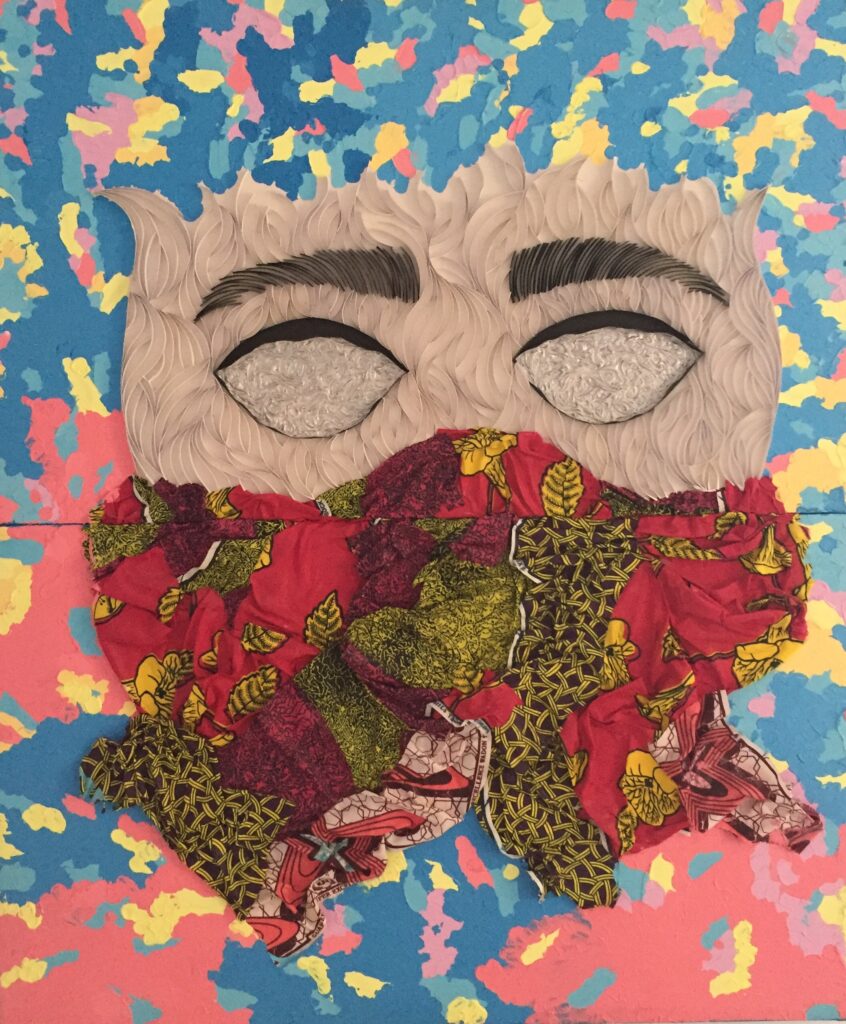The core of my artistic practice rests on three foundational pillars. The first is an attraction to lines. I have always had a genuine fascination with lines. I think it’s interesting how the primary component of all complex forms can be ambiguously loaded with meaning. A line can connect and separate, enclose and exclude, direct and misdirect, all at the same time. To a large extent, my work is a three-dimensional manifestation of lines. I amplify their complexity by enabling them to catch pockets of light and cast subtle shadows. This becomes an avenue to tease out smaller stories within wider narratives visually. The second pillar is the seeming neutrality of paper. I view paper as a conceptual Trojan horse. It’s a basic, unassuming material that exists in the backgrounds of our lives; bland, reliable, and ordinary. By making paper the visual centerpiece of my art, I encourage my audience to reconsider the material’s value and potential. This re-examination also underscores a running theme in my practice, which is that things are rarely what they appear to be.
The use of fabrics in Yorùbá, Nigerian society is my third pillar. Across my practice, I use fabrics as a reference to the practice of Aṣọ ẹbiin Nigerian society. Aṣọ ẹbi, which translates to “family cloth” refers to the selection of a fabric that serves as a “uniform” worn by families and friends alike during communal ceremonies such as weddings, birthdays and funerals. It is intended to be a show of love, support and camaraderie. The practice has, however, been corrupted in contemporary times, becoming a common source of disputes when prices are excessively inflated to turn a profit and community members are unable or unwilling to acquire the fabric. My use of fabrics references how the positive can quickly mutate to take on negative connotations. It is also a visual representation of societal pressure and expectations.
I enjoy exploring themes related to gender, memory, mythology and identity. My work involves placing strips of paper on their edges to create forms. It is a rather labour-intensive process as each strip must be manually measured, manipulated and secured. I approach paper as a means of painting without pigments. The visual complexity of my art becomes a visual metaphor for the difficulty of the themes I tackle. My art is often visually playful and engaging, characterised by intricacy and bright colours. I think of the visual accessibility of my work as a “trap” of sorts. It lures an audience into engaging before revealing the darker subject matter the work deals with; a constant reminder of the fallacy of face value.
Blossoms, Bubbles and Buttercup by Ayobola Kekere-Ekun


0 comments on “Blossoms, Bubbles and Buttercup by Ayobola Kekere-Ekun”